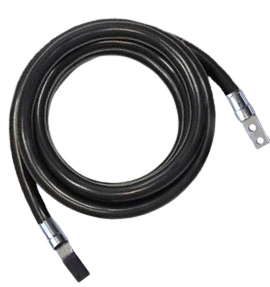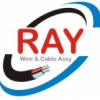Wires Are More Affordable…When They Are Right for the Job
You may be thinking extra protection means a cable assembly is always the right choice for your project, but that’s not always the case. In situations that require a small, lightweight option, a wire might be your best bet. Because wires are generally less expensive to produce, it can be a more affordable option — especially if the wire will be used indoors in a relatively sheltered environment.
BENEFITS TO WORKING WITH A CABLE ASSEMBLY
You probably already know that creating a custom cable with a reputable cable assembly manufacturer is a great way to make sure the finished cable is tailored to the needs of your equipment or product. If you were using an off-the-shelf cable testing it out on your equipment might be as simple as purchasing one and plugging it in. With all the options available when creating a cable, working with a cable assembly manufacturer
SAFETY SHOULD ALWAYS BE THE TOP PRIORITY WHEN CREATING CABLE ASSEMBLIES.
Sourcing cable assemblies from a reputable manufacturer like ray is the best way to ensure your equipment or product is free of safety issues. While there are situations when an off-the-shelf cable assembly makes sense for your budget and the cable’s application, it is essential to carefully consider how using an assembly that is not customized will affect the overall success of the project.
Any time you are dealing with electricity, safety is key. Faulty cable assemblies made from improper materials can cause equipment damage, which can lead to expensive repairs. In addition, you will experience lowered productivity while the damaged equipment is being repaired. That may be the best-case scenario. Low quality cable assemblies can cause bigger problems, like environmental harm and safety issues from toxic smoke or electrical fires.
Wires & Cables Aren’t the Same Thing
This fact may seem pretty obvious, but many people use the terms wire” and “cable” interchangeably. It’s understandable. Wires and cables are similar in that they carry electricity or signal from one place to another. However, there are a few very important differences. Wires are made up of a strand (or strands) of conductive material like copper and are suitable for a wide ranges of applications beyond carrying electricity and signal. They are also one of the components that make up a cable. Conversely, a cable is made of two or more conductors that are insulated. They tend to be better protected than wires and are suitable for applications that require more durability.
Both Are Used to Organize Wires & Cables
The basic purpose of both wire harnesses and cable assemblies is to bundle wires or cables. Bundling wires or cables allows you to keep them more organized, especially in situations where having multiple cables and/or wires takes up too much space or can cause additional wear that is easily addressed by bundling. A few common places you see bundled cables or wires are cars and computers.

Wire Harnesses Have a Thin Layer of Protection
While cable assemblies are more heavily protected with insulation and jacketing material, wires usually have a thin exterior covering made of thermoset or thermoplastic material. This covering is meant to protect the environment or a person handling the wire from the flow of electricity. The jacketing material can also be color coded to aid in keeping systems organized and make it easy to identify different types of wires.

Cable Assemblies Are More Durable
With the additional materials used in cable assemblies, Ray cable is able to design the assembly to address exposure to extreme temperatures, moisture, friction, chemicals, and more. Ray Cable can also take size and flexibility requirements into consideration, so the cable is a perfect fit for your application. A cable assembly may require less maintenance and can also be easier to install the conductors are bundled.
Safe Materials for Your Cable Assemblies
When going through the design process, be sure to discuss materials that will be used in cable assembly. Choosing the right gauge and material for the conductor is key for functionality and safety. However, making good decisions when it comes to insulation and jacketing can also be the difference between a safe cable assembly and one of questionable quality. While there are many components that could affect the safety of cable assemblies, talking about conductors, insulation, jacketing, connectors, terminals and strain relief is a great start.
Conductors
Copper is the most commonly used conductor, but that doesn’t mean that it’s the right material to use for your project. Because it is prone to corrosion, it is necessary to consider whether plating or copper alloys might be more appropriate choices. Another consideration is whether your equipment would be better served with a solid or stranded conductor.
Insulation & Jacketing
Clear industry standards exist for the appropriate insulation and jacketing to use in specific applications, so be clear about the conditions your finished cable will be operating under. Does the cable need to perform in extreme temperatures? Under heavy pressure?In wet environments? The answers to all of these questions will help your cable manufacturer choose the right materials.
Assembled Cable
As you may have guessed from the name, assembled cables consist of multiple pieces that are put together manually in the field. Connectors terminals can have copper/metal, and in some applications are the only solution. However, when you are choosing between assembled and molded cable assemblies, there are a few important considerations: Installation — Since cables and terminals are assembled in the field, the experience and knowledge of the technicians performing the installation is very important. Whether using in-house or outsourced personnel, you must ensure that they are properly installing and testing your cable assemblies to prevent failure due to improper installation.
JACKET MATERIALS
The final barrier between the environment and the inside of your electric cable is usually its jacket. This final covering acts as an insulator, a shield and protective cover. For your cable we can use materials as simple as PVC or as robust as natural rubber, Meoprene compound, Teflon or Silicone.
CABLE TYPES
There are many standard cable types. The cable standards help designers choose a cable with known specifications instead of creating one from scratch. These can be made in many different gauge configurations.

UL CERTIFIED WIRE & CABLE
There are many standard UL cable Assembly types. UL standards help designers choose a cable assembly with known specifications instead of creating one from scratch. We are certified by UL to produce many standard types of wire and cable assemblies.
STRANDING SIZES
Your conductors can be made with stranding as small as 0.002 inches (0.05mm) which is excellent for hi-flex, supply cables. If you need a standard power conductor, we can use stranding as large as 400 mm. Stranding can be bare copper, tinned conductor or even plated with precious metals such as silver for increased conductivity.
CONDUCTOR INSULATION
The first protection in any cable is the conductor’s insulation. We use the range from basic PVC, PE or PP. We also use insulating materials for electric cable assemblies such as natural rubber, PU, TPE, PTFE (Teflon) and silicone.

MATERIALS
- Polyvinylchloride (PVC)
- Polyurethane (PU)
- Thermoplastic elastomer (TPE)
- Thermoplastic polyester elastomer (TPEE)
- Thermoplastic vulcanizate(TPV)
- Polytetrafluoroethylene(Teflon)
- Silicone
- The hardness or softness of each material can be varied.

WRAPS AND SHIELDS
- Often a cable’s conductors need to be wrapped or shielded.
- High flex cables require a soft barrier between the
- conductors and outer jacket to prevent abrasion.
Ray cable assembly is only as good as its parts, and this starts with the cable itself. At RAY, we extrude our conductors and our cable to the most exacting specifications. We offer cable assembly design expertise and have manufactured cable assemblies to fit a vast spectrum of flexural requirements. These abilities allow RAY Cable to create the cable assembly solutions needed in a wide range of industries.
CONDUCTOR COLORS
As one of the leading cable assembly manufacturers, we make cable with many conductors sometimes well over 50.

AVAILABLE COLORS
- Black
- White
- Red
- Green
- Brown
- Blue
- Orange
- Yellow
- Purple
- Gray
- Pink
- Tan
- White/Black
- Red/Black
- Green/Black
- Orange/Black
- Blue/Black
- Red/White
- Green/White
- Blue/White
- Orange/Red
Determining the General Type of Cable Assemblies
The Ray cable starts with the simple assumption that all cable assemblies carry power from one end to the other. The first step we take is to find out which the assembly needs to carry, or both. Since we extrude our own cable, we can handle any of these scenarios, but there are some power cables we can’t make. Determining that from the beginning is critical for us and should be for you as well.



